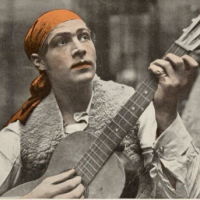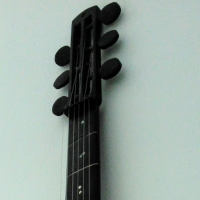DjangoBooks.com
Welcome to our Community!
Categories
- 20K All Categories
- 1.1K General
- 476 Welcome
- 59 Archtop Eddy's Corner
- 146 CD, DVD, and Concert Reviews
- 385 FAQ
- 26 Gypsy Jazz Italia
- 27 Photos
- 202 Gypsy Picking
- 21 Unaccompanied Django
- 15 Pearl Django Play-Along Vol.1
- 17 Gypsy Fire
- 45 Gypsy Rhythm
- 1.4K Gypsy Jazz University - Get Educated
- 131 Gypsy Jazz 101
- 227 Repertoire
- 218 History
- 708 Technique
- 51 Licks and Patterns
- 6 Daniel Givone Manouche Guitare Method Users Group
- 20 Eddie Lang Club
- 1.3K Gypsy Jazz Gear
- 802 Guitars, Strings, Picks, Amps, Pickups and Other Accessories
- 459 Classifieds
- 49 Recording
- 62 Other Instruments
- 18 Violin
- 5 Mandolin
- 22 Accordion
- 7 Bass
- 10 Woodwinds
- 347 Gypsy Jazz Events
- 143 North America
- 109 Europe
- 95 International
In this Discussion
Who's Online (0)
Lick Tricks
Howdy Djangists,
I'm on a lick kick. I mostly practice licks and transcribe nowadays. I'm interested to hear from the collective brain on the topic of how to make licks into living things. Some key approaches I use or have heard of are:
1) Working the licks with a metronome so as to internalize better.
2) Stitching licks together into etudes. (I don't do this. Should I? The stitched together frankenstein can end up seeming clunky to me.)
3) Practice by type (minor, major, dominant) over single chord backing tracks rather than just changes.
4) Play licks over tunes/backing tracks, potentially adjusting for chord type (iow.. make a maj lick into a min so as to make it fit over each chord).
5) Make the lick your own with timing adjustments and other tweaks.
The biggest challenges for me relate to simple recall and getting licks in over fast changes at jams.














Comments
Here’s a vote for #3,
Practice by type (minor, major, dominant) over single chord backing tracks rather than just changes.
Somehow by a mysterious process, learning pre-learned arps and licks develops into playing your own lines
sorta like how baby talk gradually develops into language
and the thing with learning the licks that you like best is that this lick gradually morphs into being “you” to the point where even careful listeners would have no idea where you got your original inspiration from
I love to set Band in a Box to about 150 bpm and choose just one chord to mess around with over in different positions all over the fingerboard
Did you ever see those soccer players practising, how they can keep dribbling the ball like, forever! all by themselves?
Its sort like that…
Good luck,
Will
Edgar Degas: "Only when he no longer knows what he is doing does the painter do good things.... To draw, you must close your eyes and sing."
Georges Braque: "In art there is only one thing that counts: the bit that can’t be explained."
Yes to all of the above. I'll elaborate later on...
One of the most important things with licks is to multi purpose them (if they are short enough). Usually a lick over major can be played over minor and often some form of dominant 7th or even more. I find really long licks to be less useful, best to take them a part and use smaller segments out of them otherwise you are basically copping a portion of someone else's solo.
I prefer finding patterns on guitar and rolling my own, that way I creating cohesive licks that make sense to my brain than fitting someone else's into my playing, but I get it if you want someone else's inspiration or you need something specially Django.
www.scoredog.tv
Point 1, it's really a must. Either with a metronome or a backing tracks. I think important point is to practice playing licks starting behind the beat, on the beat and ahead of the beat. Not pulling or pushing the tempo, just starting on 3rd or 4th beat of the previous bar, 1st beat, or 3rd beat of the bar etc... Which in a way ties into your point 5
2 I felt like that for a long time, stitching things together sounded bad. But the more you do it, the better you get at making it a coherent whole. Or maybe I just learned to ignore the sound of bad.
3 yes, but rather do this over a small group of chords; 2-5, 1 to 6 either dom or min, 5 to 1 dom or min and so on. Both are important, I just think priority weighs more to learning to navigate the paths between chord degrees rather than playing nice stuff over a single flavor.
4 I tried this for a while and had very little success. In my experience, I did better with just having separate licks and phrases.
5 one way I went about this is don't even try to learn a phrase or a lick verbatim. Just hear it enough times until you can more or less hum it and then play whatever you remembered just making sure it fits the chord or a progression.
Lastly, I'll just quote what CVH said when I asked him how does he remember so many phrases; throw 50 darts at the board and maybe one or two stick. Even the great George Benson said something like "I'd learn 10 licks but would end up remembering one, so I said aha, I need to learn a hundred". So what you're going through is not a unique experience, the opposite actually.
Great stuff, Buco!
Your last comment reminds me of the "Baby Talk" reference by Lango-Django above. I think language learning is a good parallel for the process of learning to improvise in a particular musical style like Gypsy Jazz. A child hears a variety of word combinations in sentences over and over until they can come up with their own. The more variations we can be exposed to the better. This raises the question as to how much to spend time internalizing and perfecting along the way. Perhaps, it's better to just plow ahead absorbing as much as you can in order to get that exposure and reinforcement.
A side note, I also do this thing where I try to hit chord tones on quarter or half notes in various positions over backing tracks (or with a metronome) just to continue getting comfortable with playing changes. This allows me to know where I am and slot in the licks easier.
I like that final idea, JD, will have to try it.
One thing nobody has mentioned is that doing all this LH stuff is all based upon your RH playing a certain way, and therefore making the guitar sing in a certain way.
And one of the best ways to judge your own improv is: can you play your own licks and improvs with that same awesome RH authority?
Once upon a time at “Django in June” there was a shy young fella in my dorm who continuously and compulsively played his Epiphone 335 unamplified, all by himself in the first floor lounge.
With his ultra-thin nylon pick, he would quietly practice his stuff at approximately a million miles an hour.
But the extraordinary speed kinda didn’t matter because the guitar’s tone was so crappy and his RH feel was so… wrong.
In fact, his whole shtick was kind of annoying…it just lacked musicality.
That’s what we should strive to avoid…
Edgar Degas: "Only when he no longer knows what he is doing does the painter do good things.... To draw, you must close your eyes and sing."
Georges Braque: "In art there is only one thing that counts: the bit that can’t be explained."
A side note, I also do this thing where I try to hit chord tones on quarter or half notes in various positions over backing tracks (or with a metronome) just to continue getting comfortable with playing changes. This allows me to know where I am and slot in the licks easier.
This is what I did for a while and it was advice I received from my old guitar teacher. Now, I'm not so sure it's all that useful. I mean it's absolutely useful skill to have but getting there this way seems like trying to eat lunch while it's still just raw ingredients on the table. What I mean and how I feel about it, is the teachers that give this advice can do this effortlessly because they're so closely familiar with the fretboard. But I don't think they did this kind of practice to get there. Though these are just my own internal musings and how I feel about this stuff today, I'm not really qualified to say it doesn't work.
Buco,
I learned this exercise from a modern jazz teacher. My current use of it is a reduction of the fuller exercise, which I also recommend. It's specifically useful for developing alternate picking, which ties down strokes to down beats and upstrokes to up. Alternate picking, for those not familiar, you move your hand up and down whether you hit the strings or not. So, to work on it, my teacher suggested using Jerry Bergonzi's Melodic Rhythms book and playing the chord tones using the rhythms from the book over changes, using scrict alternate picking. The book and approach is used by horn players and any instrument doing the modern jazz thing. The trick is you have to go in one direction in one position at a time, keeping a smooth flow through chords.
Doing Gypsy style right hand with the above approach would be tricky. That's why I try to simplify it and do solid half, quarter, or eight notes and do lots of downstrokes so as not have to think about my right hand. It's a kind of a voice leading exercise.